What is your hair type? Everyone thinks it’s an easy-to-answer question, but in fact, most are wrong. Natural hair types are not as simple as we always suppose.
It’s not me and you but perhaps everyone has been asked this type of question several times. It might be just personal curiosity, but in some cases, it’s a matter of science that needs clarifying.
There have been so many things to care about our natural Remy human hair that we do not take hair typing into serious consideration. That said, no hair is the same. The differences in the texture of certain types of hair (for example, shades of straight hair) are not so clear but there are still “some”.
Understanding these things is important, as it would decide how your hair will look like. Therefore, this article from Hairsystem would be dedicated to clarifying the natural hair types of humans. We will discuss the hair typing system of Andre Walker, which is the most popularly used worldwide.
How to determine your natural hair types?
It is a truth universally that we, humans, understand too little about our bio hair. We bet that most people can’t give an exact answer to the question “what is your natural hair type”. You might say “Never Mind” as ignorance of this matter.
However, do you know that to gain strong and healthy hair, you should apply different care to different types of hair? It would never be a wise choice to choose a product made for normal straight hair to apply to your curly locks. Another case is, you are searching for a toupee to conceal your bald spot where your kinky hair doesn’t grow, and you go for a loose curly hair system. Imagine what could happen? Believe us, you will never expect to experience that fake hair look!
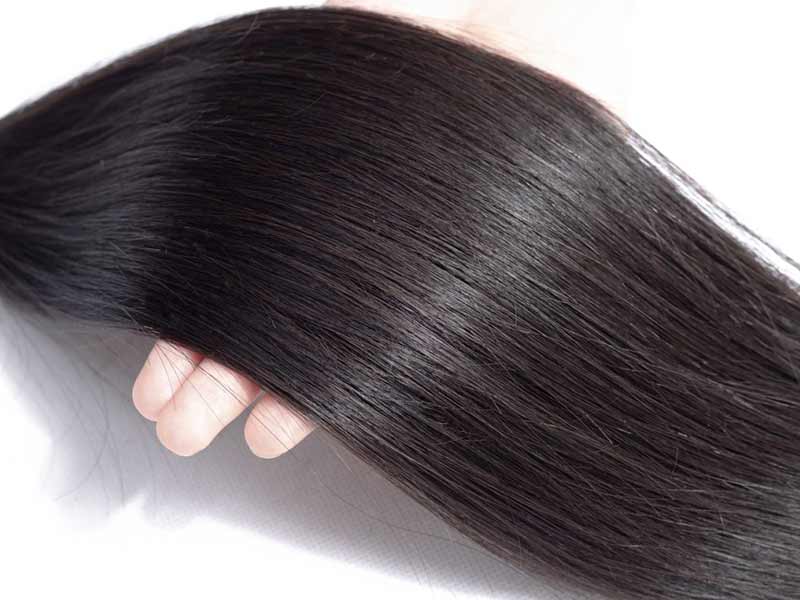
Realizing the importance of knowing the types of human hair, plenty of hair typing systems have been published these years. They include the 03 most popular systems: the one from Oprah Winfrey’s hairstylist – Andre Walker, LOIS hair type chart, and FIA’s Hair Typing System.
These systems are all contributed to the natural black hair of the African American community – the one with the hugest interest in hair styling. In other words, they mostly work to clarify the differences in the texture of black hair.
Andre Walker Hair Typing System
As its name states, this black natural hair types chart is invented by Andre Walker – a famous hairstylist. This man has worked as a stylist for top stars in the United States, namely Oprah Winfrey – the world’s top talk show host. Andre Walker, himself, is also a reputable name.
His work at the Oprah Winfrey Show has helped him win the Daytime Emmy Awards for Outstanding Achievement in Hairstyling for 07 times. He also works for other famous figures such as Michelle Obama – the very first African American First Lady of the US, Barbara Pierce Bush – the wife of President George Bush, and Halle Berry – the Best Actress in the Academy Awards in 2001.
In the 1990s decade, Walker published his classification system to support his line of hair care products and serve his own professions. It was established in “Andre Talks Hair”. Despite its initial purposes, it soon bloomed and has been used globally as the most reliable hair classification system to identify natural hair types.
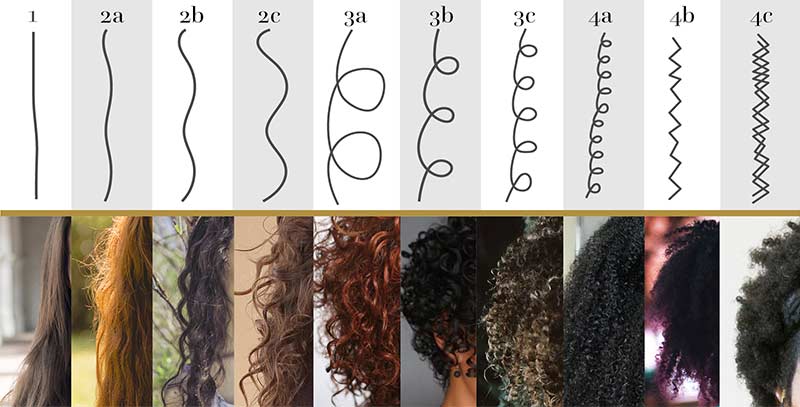
In his chart, human hair consists of 4 types: straight, wavy, curly, and kinky hair. Each type also includes 3 sub-types that he labels A, B, C. Among these types, the 3C and 4C natural hair types are initially not included in this chart. The hair conscious-community later added them to form a complete chart.
Andre Walker Hair Typing System:
| Type 1 (1A, 1B, 1C) | Straight Hair (Fine & Fragile to Coarse & Thin) |
| Type 2 (2A, 2B, 2C) | Wavy Hair (Fine & Thin to Coarse & Frizzy) |
| Type 3 (3A, 3B, 3C) | Curly Hair (Loose Curls to Corkscrew Curls) |
| Type 4 (4A, 4B, 4C) | Kinky Hair (Tight Coils to Z-Angled Coils) |
LOIS System For Natural Hair Types
When Andre Walker’s way makes it somehow hard to differentiate the curly and kinky types, the LOIS system was born to tackle this problem. The 4 letters inside its name are the acronyms for the patterns of curls that your hair most resembles. To make the best use of this LOIS natural hair types chart, you will need to evaluate the size, shape, as well as texture of your strand.
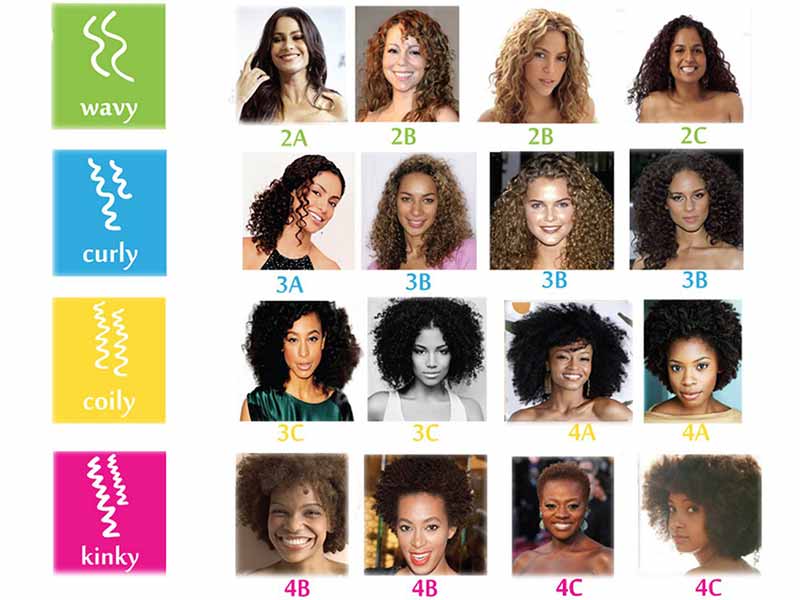
FIA’s Hair Typing System
Another system to determine natural hair types is the FIA system. This scheme is the most complicated among the three.
Similar to the two systems above, Fia bases on the curliness of the hair strands to divide the types. 1 A-B-C types are for straight hair, while the 2’s are for wavy, the 3’s for curly, and the 4’s for really curly one.
This system also helps to classify the thickness of your hair, which it says could be fine, normal, or coarse.
Each classification system has its own pros and cons, and none of them are perfect. Therefore, many people have chosen to combine the three when they want to know about their hair types. Which one is better is still a question to be answered.
You might also want to read:
- Width Of Human Hair: These Statistics Are Real!
- Human Hair Color 101: All You Need To Know About
- How Fast Does Human Hair Grow?
Andre Walker’s System to classify natural hair types
Even though we do not suggest using any specific scheme, Hairsystem can’t help agreeing that the system by Andre Walker is the most popular used. That is to say, global acceptance makes it a method that we could rely on.
Down below are the 4 categories of natural hair that Andre Walker has defined.
Type 1: Straight Hair
The very first type to mention is straight hair. By type 1, the hair is naturally straight. Based on some dissimilarities in the texture, this type is then divided into 03 sub-types:
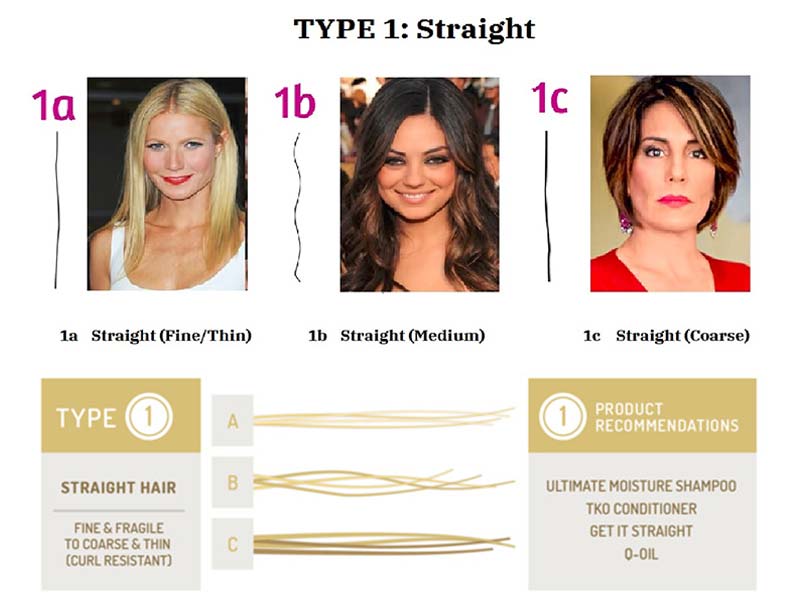
– 1A: 1A natural hair is thin and soft. It also possesses a noticeable shine with quite an amount of oil on each strand. This characteristic helps significantly in preventing hair damage; however, it would be super hard to maintain the curls when styling.
– 1B: Compared to 1A hair, 1B offers a thicker volume and more body. Because it has a medium-textured, the tresses are quite rough.
– 1C: The hair is exceptionally coarse. Therefore, it is difficult to make curly hair from straight if you are wearing that hair type.
Type 2: Wavy Hair
With this hair type, the hair strands appear to be wavy and coarse. Moreover, it is not too oily or dry. It’s just somewhere between them. There are 3 smaller types in this natural wavy hair type. They are 2A, 2B, and 2C.
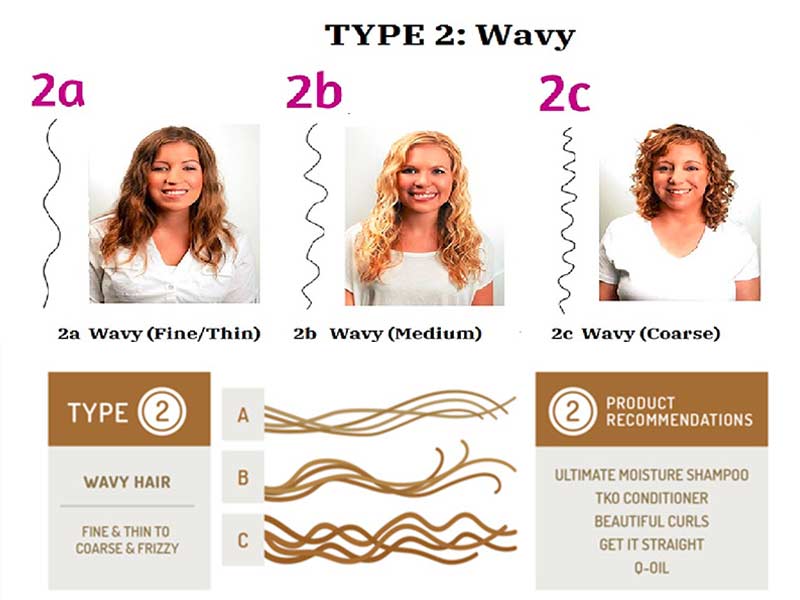
– 2A: with type 2A, the hair strand is thin and fine. It has an “S-shaped” pattern, which makes it easy to style to either straight hair or curly hair.
– 2B: incredibly, the tresses can adhere to the shape of your head. Therefore, it is not a piece of cake to style them.
– 2C: the hardest type when it comes to styling. The hair quality is the worst among the three. The strands are extraordinarily thick, coarse, and frizzy.
Type 3: Curly Hair
Regarding natural hair type 3, this hair possesses smooth and flexible curls. The texture is soft, well defined, and are further divided into 3 sub-types: 3A, 3B, and 3C.
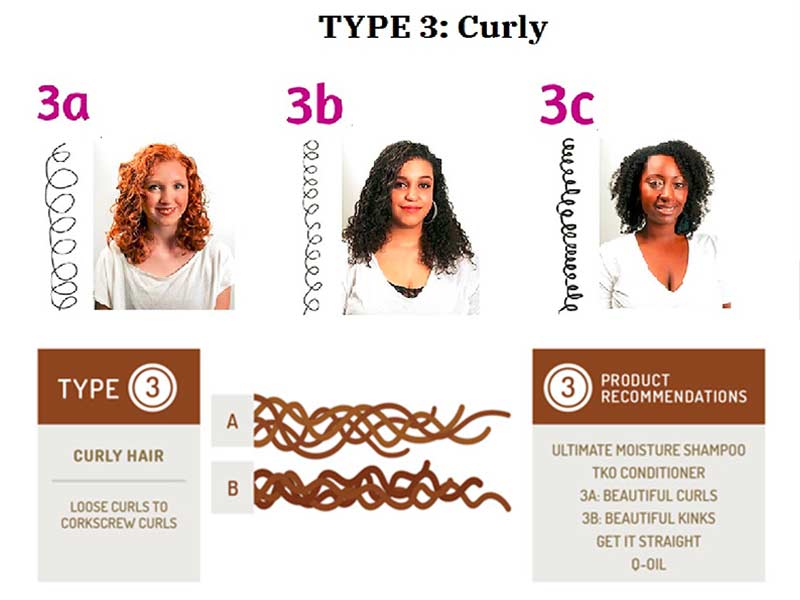
– 3A curly hair: the hair curls are big, shiny, and loose.
– 3B: this type has a medium amount of curls. The curls are tighter than type 3A and of course, it looks fuller.
– 3C: the curls are exceptionally tight and look like corkscrews. Natural hair types 3C, however, is not mentioned in his book.
Type 4: Kinky Hair
Natural hair type 4 is the curliest ones, which Andre said to be dry and frizzy. The hair is tightly twisted and is fragile. It includes 3 subtypes: 4A, 4B, and 4C.
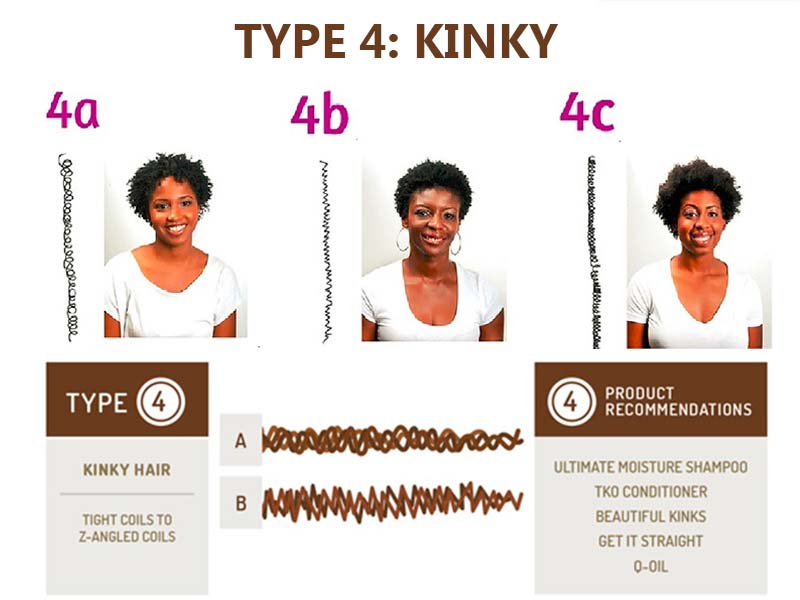
– 4A: the curls are the softest and best defined among the three. It has an S pattern.
– 4B: with this type, the hair strands are in a zigzag pattern. It bends in sharp angles, the curls are tighter and are less defined.
– 4C: similar to 3C, 4C natural hair is also not included in the book. This type refers to the hair with curls that are most likely to suffer from breakage and shrinkage.
According to Andre Walker, the condition of hair decreases according to the ascending order of the letter and number. In other words, type 4 has the most intricate pattern and texture, which requires much care and maintenance.
Let’s dive deeper into this curly-textured hair.
Related posts:
- How To Straighten Natural Hair: 3 Fast & Easy Ways To Go
- 3 Doubts About Human Hair Bundles You Need To Clarify
Curly Natural Hair Types 4A, 4B, 4C
Type 4 hair is common among African-rooted people, namely African American people. This hair is better known under the name “Afro-textured hair”, which simply means “the natural texture of African people”.
As Andre mentioned in his book, kinky hair is super hard to style due to its fragile texture. African American natural hair types are:
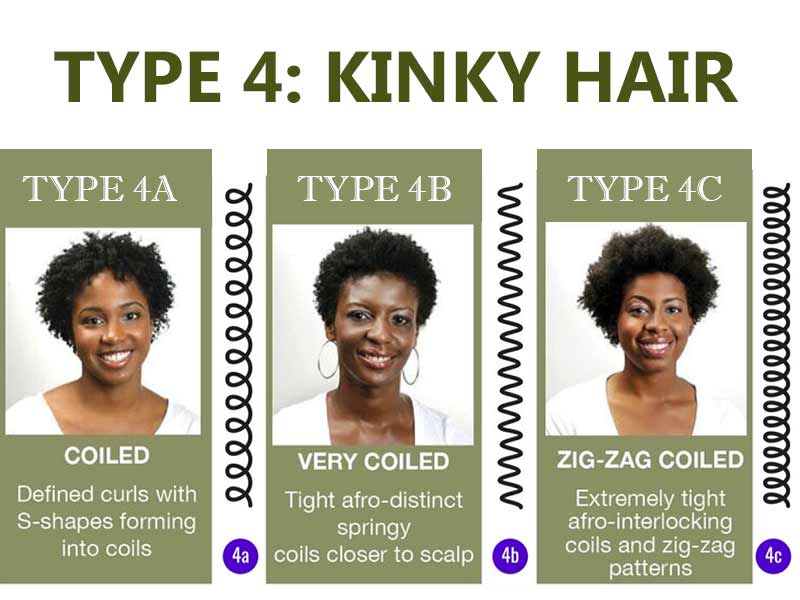
– Vulnerable to breakage. Due to the exceptional density of curls, Afro hair is bad at withstanding heat and damage. The kinky texture is more fragile than other hair types, also.
– Easy to dry. The amount of natural oil on kinky hair is far less than other types like straight or wavy hair. The ability to retain moisture is weaker, too. These two things are vital to protect the natural hair structure; therefore, the lack of them could make kinky hair type 4 more prone to damage.
There are different types of natural type within type 4. It is divided into 3 sub-categories, which are 4A, 4B, and 4C respectively.
Controversies over Andre Walker hair typing
In his book “Andre Talks Hair”, Mr. Walker shared his thoughts that every hair is good hair, regardless of ethnicities and cultural backgrounds. He wrote his book with a hope to get rid of the old hair stereotype against good vs bad hair. However, with his own classification, opinions have been raised, saying that Andre’s system is somewhat hierarchical.
And the fact that he places “kinky” as the very last category (maybe as the worst) is said to be a discrimination against the Afro hair texture.
He has been caught red hand with offending statements toward black women. For instance, he said he always recommended going for natural hair texture. However, with women possessing Type 4 (kinky curly hair), Andre said they should go for some relaxing process to alter their real hair. The reason for that suggestion is that there are only restricted styling options for that hair type. And natural hair type 4, coincidently, is the common texture that black-skinned women bear.

In the context that there have always been discriminations toward the Black among the American society, the statements by Andre Walker is nothing different from adding fuel to the flames. Even when he has published an explanation for his previous speeches, disagreements and offenses are still there.
However, despite these controversies, the system that he built is still preferable to use worldwide. Hairstylists, salons, and vendors make use of it to refer to the hair of their clients. Whether the hairpieces have the same texture to the wearers’ real hair depends largely on this chart of natural hair.
Final thoughts
Now that you have been covered with the classification system of natural hair types, can you identify yours? Let us know by commenting below.
Whether you are naturalistas or someone who loves to change your hairstyles, do not take it for granted as it would affect the way to care for your bio hair as well as how to choose a suitable hairpiece. For example, if you are wearing Afro-textured hair with deep curls, then it would be a disaster if you order a wavy hair topper to cover your crown. However, if you are going for a full wig, then you could choose whatever you want.
Remember to consider everything carefully in advance so that you won’t regret later.
In case you still can’t sure what texture your hair possesses, contact Hairsystem directly to get support. Our crew is online 24/7 to constantly respond to any of your inquiries in a timely manner.
Finally, hope you enjoy the post. Follow our blog to get more interesting news about hair and hairpieces.
Have a nice day!

